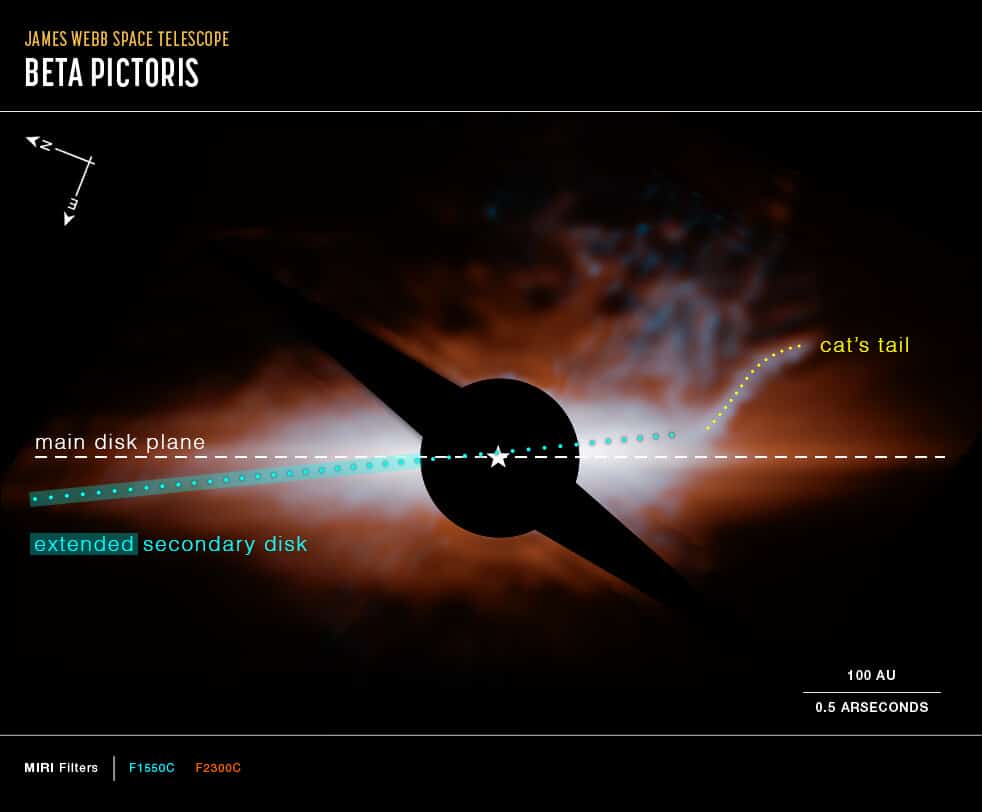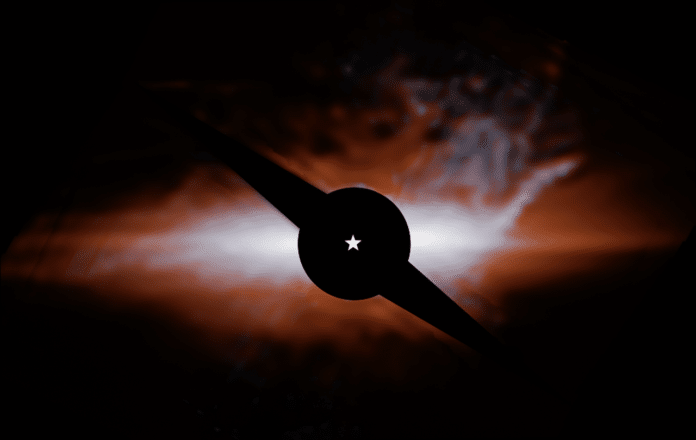Scientists have made a new discovery in the Beta Pictoris planetary system, located just 63 light-years away. This system has been studied for decades and has been known to possess the first dust disc imaged around another star. Recently, a team of astronomers used the NASA/ESA/CSA James Webb Space Telescope to investigate the composition of Beta Pic’s previously detected main and secondary debris discs. They discovered a new, previously unseen structure that exceeded their expectations.
The team used Webb’s NIRCam (Near-Infrared Camera) and MIRI (Mid-Infrared Instrument) to investigate the composition of Beta Pic’s previously detected main and secondary debris discs. The results revealed a sharply inclined branch of dust, shaped like a cat’s tail, that extends from the southwest portion of the secondary debris disc.
Further analysis showed that the dust may be highly porous “organic refractory material,” similar to the matter found on the surfaces of comets and asteroids in our solar system. Additionally, the team deduced that the cat’s tail is the result of a dust production event that occurred a mere one hundred years ago.

The team’s preferred model explains the sharp angle of the tail away from the disc as a simple optical illusion. Our perspective combined with the curved shape of the tail creates the observed angle of the tail, while in fact, the arc of material is only departing from the disc at a five-degree incline.
These findings suggest that Beta Pic may be even more active and chaotic than previously thought. The discovery of this new structure shows that there is still much to learn about the Beta Pictoris planetary system, even after decades of study.
The team’s use of the NASA/ESA/CSA James Webb Space Telescope highlights the importance of continued investment in space exploration and technology. With further research and testing, we may be able to unravel the mysteries of our universe and learn more about the systems that exist beyond our own.
